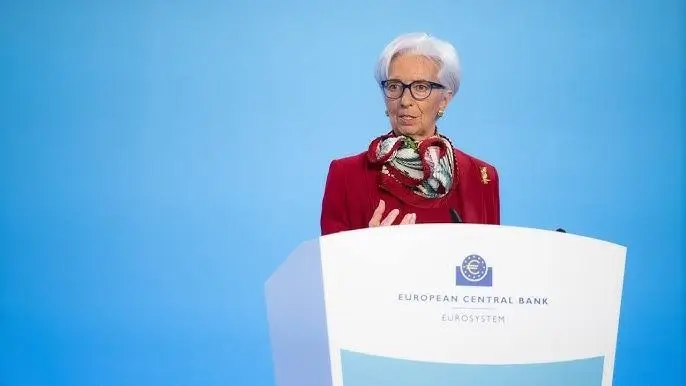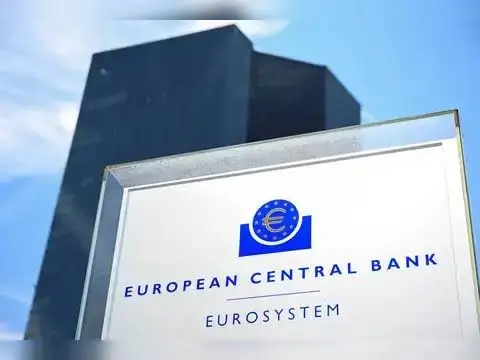ECB Moves First: Interest Rate Cut Signals New Chapter in Eurozone Recovery
The European Central Bank (ECB) has made a bold move, cutting interest rates for the first time since 2019, as signs emerge that the worst of the eurozone inflation crisis may be easing. The decision, which lowers the deposit rate from 4% to 3.75%, comes amid growing questions over the Christine Lagarde ECB term and whether her leadership will extend beyond its official end next year.
While the move had been widely anticipated, markets responded with cautious optimism. European stocks ticked upward and bond yields dipped, but analysts were quick to note that economic fragility still hangs over the region.
Inflation Forecast Softens, But Lagarde Remains Guarded
At the Frankfurt ECB decision press conference, President Christine Lagarde confirmed that the eurozone’s inflation forecast had been revised downward for the second half of 2025, allowing the central bank to begin monetary easing. Yet she stopped short of promising a longer-term shift.
“We are not pre-committing to a rate path,” Lagarde said. “Further decisions will depend entirely on data. The fight against inflation is not yet won.”
The ECB’s move now puts it ahead of the U.S. Federal Reserve and Bank of England in the rate-cutting cycle, though critics argue it may have acted too soon, especially with eurozone economic outlook data still showing patchy recovery.

Christine Lagarde addresses media at the ECB press briefing in Frankfurt after announcing the June 2025 rate cut.
Source: Youtube
Christine Lagarde ECB Term: Will She Stay or Step Away?
With her term set to expire in late 2026, speculation is mounting about whether Lagarde will seek a second term—or bow out amid growing political noise and institutional criticism.
Recent conversations at global economic gatherings, including the World Economic Forum, have sparked fresh debate over Christine Lagarde’s future at the ECB, with insiders hinting at possible leadership changes ahead. Some insiders suggest WEF founder Klaus Schwab is privately pushing for a fresh face at the ECB, while others believe Lagarde’s close ties with European political leaders could secure her reappointment.
“Lagarde’s reputation for navigating crises is intact, but pressure is building. Her next moves will define whether she exits on her own terms—or not,” said Sofia Laurentis, a former ECB board advisor.
Also Read: Elon Musk and Trump Rift Sends Tesla Shares Tumbling Amid Political Firestorm
Eurozone Growth: Sluggish but Stabilising
The ECB’s decision comes against a backdrop of weak but stabilising eurozone economic indicators. Construction activity remains subdued, and car sales have yet to rebound, but consumer sentiment has slowly improved. Lagarde highlighted the need for cautious optimism, noting the complexity of managing recovery while ensuring inflation remains in check.
“We’re no longer in a crisis, but we are still in recovery,” she said.
Australia’s business observers are watching closely, particularly due to the eurozone’s impact on commodity demand and global investment flows. A prolonged ECB easing cycle could weaken the euro, shifting export-import dynamics with Asia-Pacific trading partners.
Market Reaction: Brief Rally, Long-Term Doubts
Markets initially rallied after the rate cut, with eurozone bank stocks gaining as borrowing costs ease. However, concerns about medium-term growth persist. The ECB’s cautious tone has kept expectations muted, and some analysts are warning of a possible “cut and hold” strategy, with no further moves until 2026.
Bond markets saw a brief drop in yields across Germany, France, and Italy, while the euro slipped slightly against the U.S. dollar. Futures trading suggests that investors are still unsure how aggressive the ECB intends to be.
The Australian Angle: Why Lagarde’s ECB Still Matters
For Australian businesses and policymakers, the Christine Lagarde ECB term matters more than headlines might suggest. The eurozone remains a major trading partner and investor bloc, and shifts in its monetary stance often ripple across international markets. From commodity prices to capital flows, the ECB’s direction shapes global sentiment.
“Lagarde’s decisions help set the tone for central bank policy worldwide,” said Dr. Kevin Yu, chief economist at ANZ Asia Pacific. “Australia must align expectations accordingly.”
ECB headquarters in Frankfurt, where June’s policy shift marked a new phase in eurozone recovery.
Source: The Economic Times
Conclusion: A Turning Point for Lagarde and the Eurozone?
The ECB’s June rate cut is more than a monetary adjustment—it’s a reflection of an evolving strategy under Christine Lagarde’s leadership. Whether this marks the beginning of a smooth recovery or a politically fraught final chapter remains to be seen.
For now, the focus remains on the data—and on Lagarde’s every word, as Europe inches forward on a tightrope between inflation control and economic growth.


